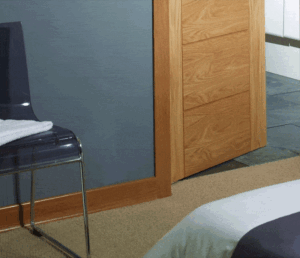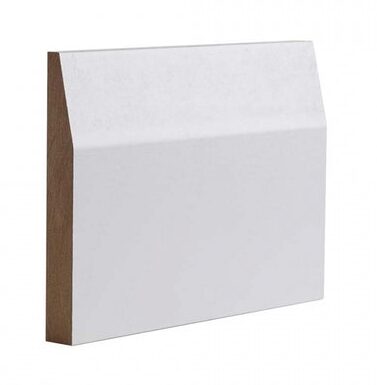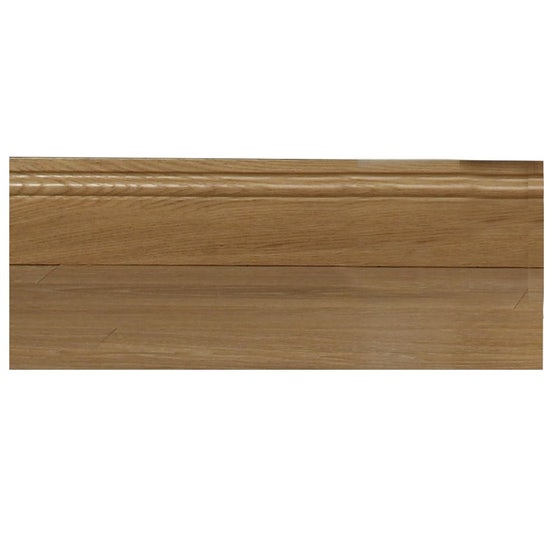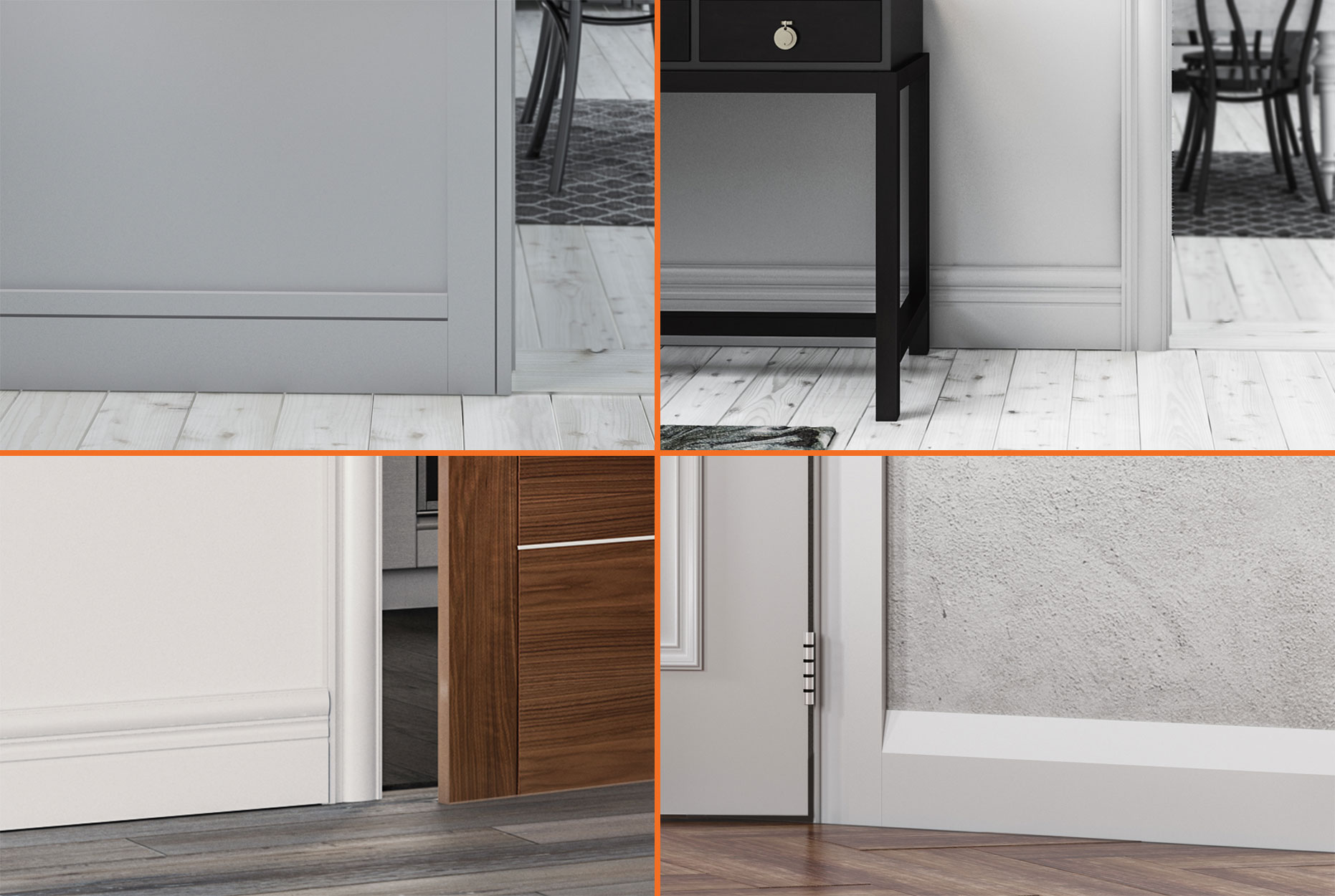Skirting boards can really bring a room together to give a seamless floor-to-wall appearance. Here’s what you need to know about skirting boards and what you can do to ensure that your skirting board is suited to your needs and theme.
Table of contents:
- Why are skirting boards used?
- What are the benefits of skirting boards?
- What material skirting board should I buy?
- What are the skirting board profiles?
- How to choose skirting board thickness
- Leaving a gap under my skirting board
- How do I work out how much skirting board I need?
- How do I fix skirting boards?
- How much do skirting boards cost?
Why are skirting boards used?
Skirting boards are typically used to finish a room and protect the delicate floor and wall edges. They can also be used to hide the joining ends of each wall and floor.
What are the benefits of skirting boards?
There are many benefits when it comes to skirting boards. A skirting board can be:
- Long-lasting
- Moist resistant
- Protects walls
- Aesthetically pleasing

What material skirting board should I buy?
| Material | Pros | Cons |
| MDF | •Budget friendly •Common modern home choice •Can be painted | •Not as rare •Cannot be machine made by machine or changed like natural wood •Higher risk of damage •Higher risk of warping •Higher risk of chipping •Higher risk of cracking •Higher risk of regular replacement •Only suited to contemporary skirting when being painted Cannot replicate the appearance of natural wood |
| Softwood | •Natural wood appearance •Can be made by machine or changed •Can be sanded •Can be oiled •Can be varnished •Can be painted | •Higher cost •Leaving wood unfinished can look raw •Higher risk of damage if unfinished •Higher risk of moisture ingress if unfinished |
| Hardwood | •Natural wood appearance •Can be made by machine or changed •Can be sanded •Can be oiled •Can be varnished •Can be painted | •Higher cost •Leaving wood unfinished can look raw •Higher risk of damage if unfinished •Higher risk of moisture ingress if unfinished |
What are the skirting board profiles?
Skirting board profiles vary from the highly detailed to the standard flat style. They purely relate to the style, so make to choose what style suits the room. Some are more traditional and complementary to Victorian-era houses, whereas new builds or modern homes may be suited to another style.
Here are the four most popular styles:
Bullnose: This classic design is one of the most popular because of its simplicity and versatility. The curve offers a quality appearance that isn’t too distracting, can fit in most rooms and offers elegance to a space where needed.
Bullnose skirting board is also easy to paint and clean. So, no need to worry about reaching into tiny crevices or corners to remove large built-up dust.
Chamfered: The chamfered design is similar in simplicity to the bullnose skirting but with a more defined and straight-edged appearance. It’s a common solution by many in construction due to the easy installation and non-distracting features. It also adds a little bit of detail for those looking for a little more striking design.

Ogee: Construction workers are partial to this design when it comes to new builds. Their detail strays off the simplistic designs of the bullnose and chamfered skirting with a softer, but more intricate, design.

Torus: The torus skirting board is a traditional design, offering a round detail on the profile. This design is inspired by classical architecture that had specific column orders with a semi-circular base on the plinth.
It is an unfortunate reality that this design is falling through the cracks when a decision for skirting is being made. If the property is a Victorian home, this can be an iconic little bit of historic restoration.
You can also purchase this skirting in a large or small size, though typically the smaller design is suited for the following:
- Small apartments
- Flats
- Compact houses
It can also be used in areas that limit the height of the skirting. This could be anything from plugs to broadband lines and more invasive systems.
How to choose skirting board thickness
There are of course many different board thicknesses, but you might not want a smaller room to have a thicker board as this could risk reduced space. You’ll find between 14mm and 20mm thicknesses, but 18mm is the most common. However, it’s important to note that the profile plays a part in the thickness of the skirting board choice. An example of this is chamfered skirting board. This will be thicker than other types and as such you will have to accommodate the chamfered finish.
Leaving a gap under my skirting board
Skirting board is required to have a gap beneath it unless it is on carpeted flooring as skirting can be fitted to the floor on carpets. This allows for movement in the flooring.
How do I work out how much skirting board I will need?
To find the total amount of skirting board needed, you can measure the length of each wall and then add the amounts together to get a total length.
However, if you want to make sure you have minimal wastage, you will need to pre-plan where you are going to cut the skirting board. This will also help determine the amount of short and long skirting board lengths needed when placing them onto the walls of the room.
Do not randomly assign any offcuts if you plan to use them as this can make for a wonky appearance and might affect the rest of the installation if you put them in before the full lengths. Additionally, the offcuts could get damaged when being cut, so risking a placement without proper planning could mean extra costs if a piece is damaged.
As a general recommendation, you can typically base the final amount you buy on the length of the skirting boards if you do want minimal wastage. For example, if your total length of skirting board is possible to achieve with only four x 3600mm lengths of skirting once cut then opt for this. Just make sure not to bank everything on offcuts.

How do I fix skirting boards?
You can find out how to fit skirting boards here. How you fit skirting boards in place will depend on the type of wall. Though typically nails or glue, sometimes screws, can be used to fit the skirting into place.
How much do skirting boards cost?
Skirting boards don’t have to burn a hole in your pocket! For a quick re-touch, homeowners could paint skirting board or opt for floor trims that match newly fitted laminate etc.
So what skirting boards can you buy at Door Superstore? Head on over to skirting boards to check out the range we have available to find your ideal profile.











